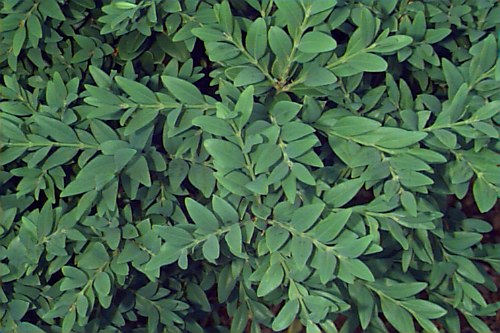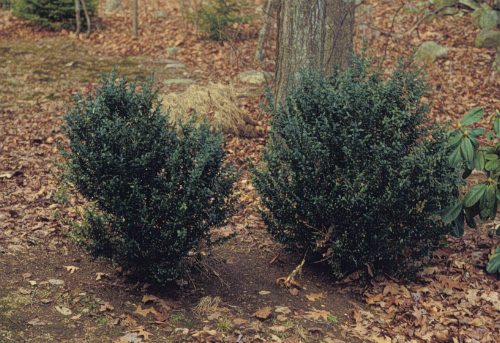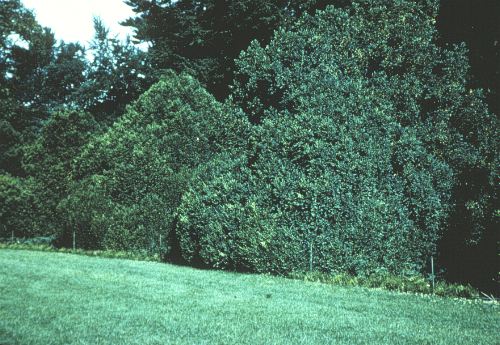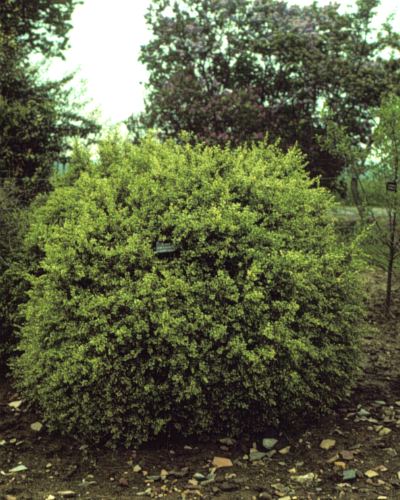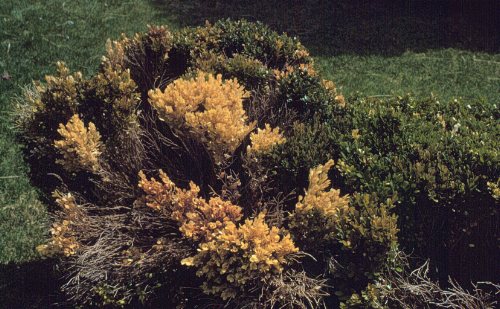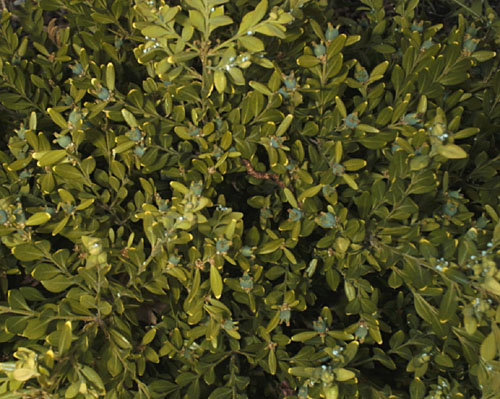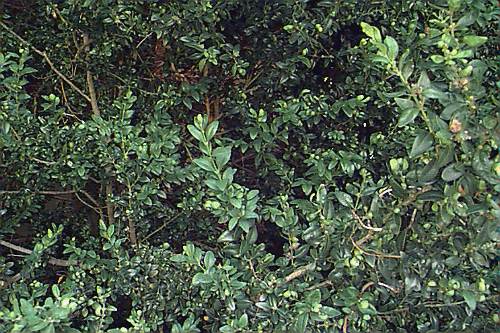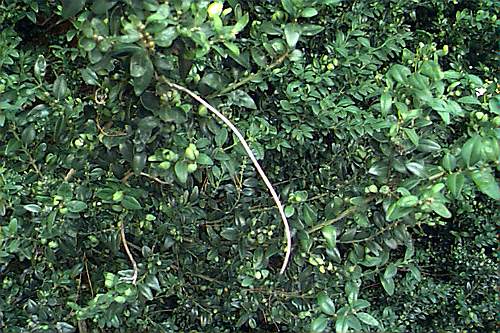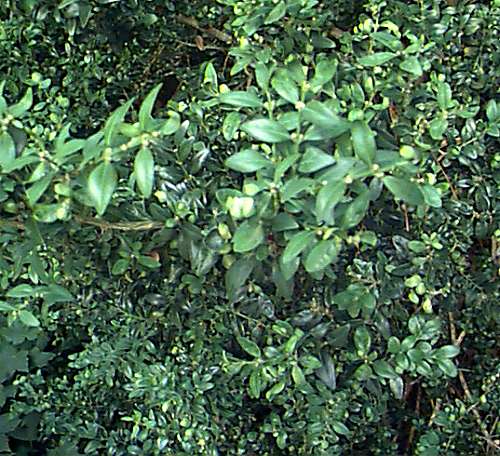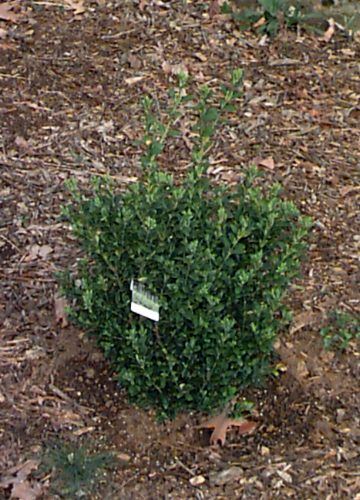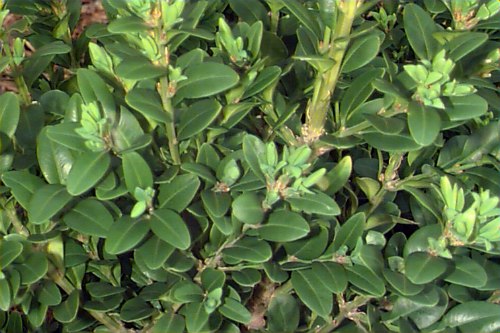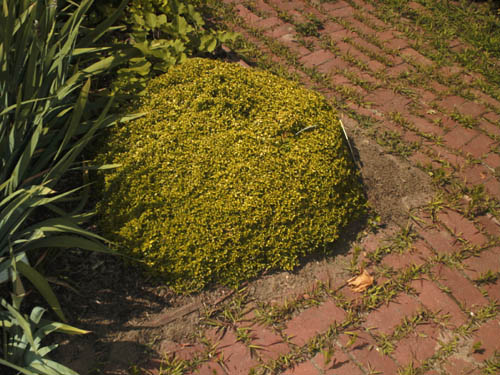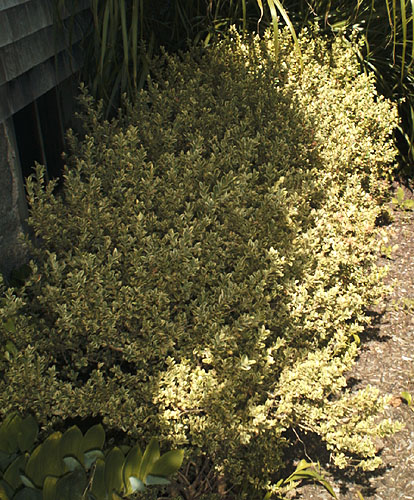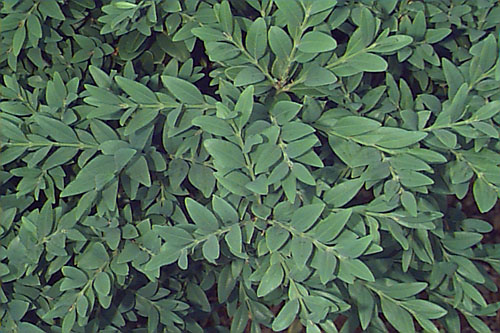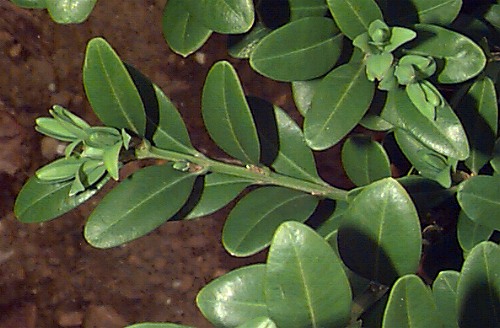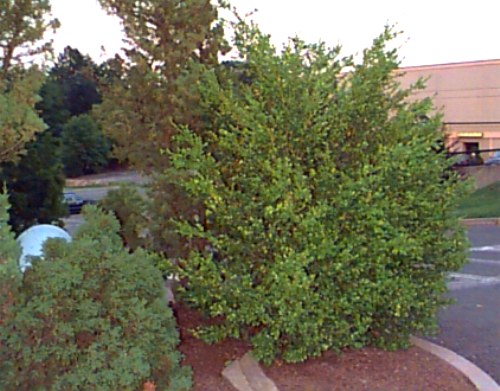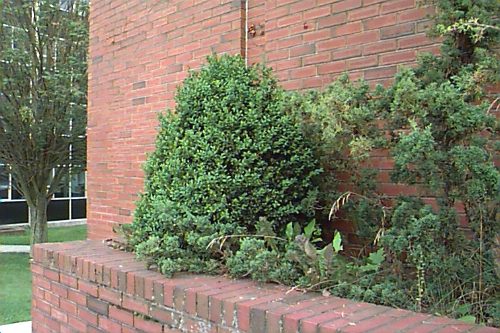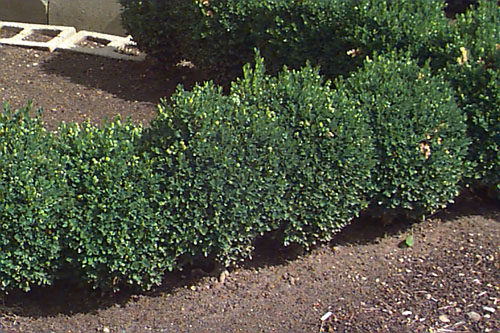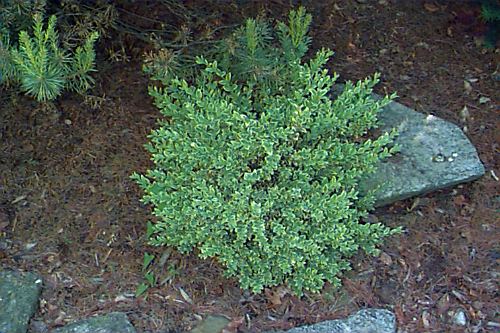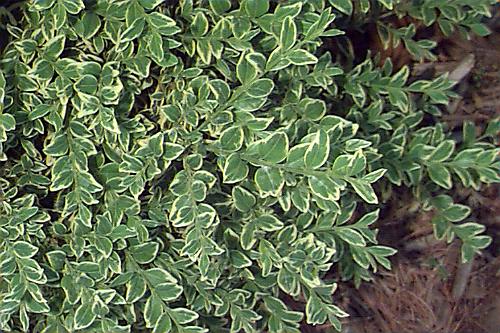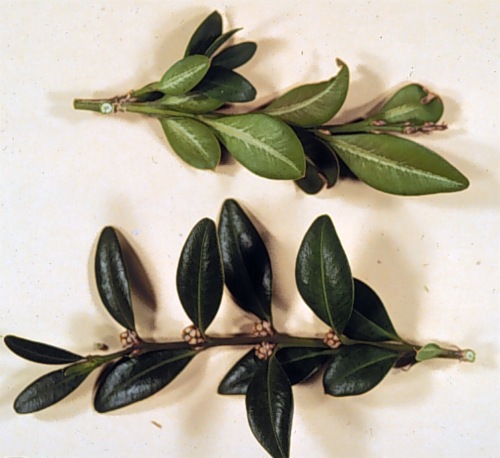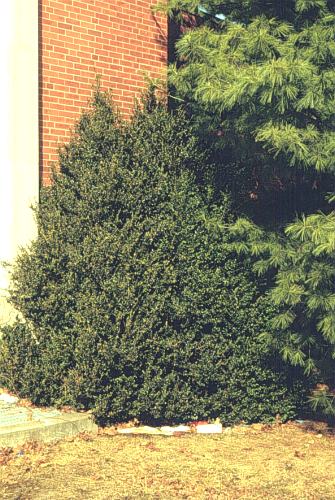Buxus sempervirens
Common Box, Common Boxwood
Buxaceae
ExpandHabitat
- native to southern Europe, western Asia, northern Africa
- zone 5 with use of proper cultivars
- long used in cultivation
Habit and Form
- evergreen shrub
- 15' to 20' tall with an equal spread
- dense and multibranched
- most often develops a gumdrop shaped form
Summer Foliage
- opposite leaves, leathery
- elliptical, 0.5" to 1" long half as wide
- leaves broadest below the middle
- dark green above, lighter yellow green below
- foliage gives off a distinct fragrance/odor
- underside of leaves has a white line from apex to base
Autumn Foliage
- evergreen, no fall color
- foliage tends to "bronze" in the winter due to cold and exposure
Flowers
- blooms in April to May
- Male and female flowers
- fragrant, but not showy
- attractive to bees
Fruit
- dehiscent 3 chambered capsule
- not of any ornamental importance
Bark
- new stems are greenish and slightly 4-angled
- older stems are brown, but hidden by foliage
Culture
- prefers moist, cool soil with mulch around roots
- best in site with full sun or light shade, but protect from winter winds, sun and cold.
- can be easily and readily pruned
- do not prune late in season as this enhances winter injury
- best transplanted form containers
- in summary, does best in an environment free from extremes
- shallow rooted so avoid cultivation beneath plants
Landscape Use
- hedge plant
- foundation plant
- mass plantings
- topiary
- formal plantings
- generally agreed to offer good deer resistance
Liabilities
- lack of cold hardiness in all sites of zone 5
- boxwood psyllid, boxwood leaf minor, boxwood mite , nematodes and phytophthora root rot can be problems as well as other insects and diseases
- foliar burn in exposed sites or during harsh winters
- foliage produces a distinct fragrance some dislike
ID Features
- opposite leaves distinguish it from Ilex crenata which has similar appearance, but alternate leaves
- elliptical dark green, small leaves
- distinct "boxwood" odor
- dense evergreen habit
- notched leaf apex
- gumdrop shape
- slightly squared stem
- white line on underside of leaf
Propagation
- cuttings root readily
Cultivars/Varieties
There are dozens of cultivars, but many are not cold hardy enough for use in zone 5. the cultivars discussed below have merit for use in zone 5 and 6.
'Argenteo-variegata' - A varigated white cultivar, very striking with its fine-textured leaves. Other variegated forms include 'Elegantissima' and 'Variegata'. Most grow to 6' tall. May not be as hardy as other types.
'Inglis', 'Northern Beauty', 'Northern Find', 'Northland', and 'Welleri' - These forms posses sufficient cold-hardiness and good form to be considered for for use in New England.
'Graham Blandy' - A very unusual fastigiate form becoming more prevalent in the industry. Grows as a narrow column of deep green leaves, to 9' tall but only 2' wide. May not be as hardy as other types.
'Pendula' - A type with weeping branches that forms a small 6' tree in time. Not widely available and perhaps not as hardy.
'Suffrutiosa' - A dense, compact slow-growing form ideal for low hedge use. Believed to be less susceptible to boxwood leaf miner. An old and commonly used cultivar, widely available.
'Vardar Valley' - A low growing form reaching 2' to 3' tall and 4' to 5' wide. Probably cold hardy to -15o F without injury. Slow-growing and mounded, this form is very popular and widely available.
